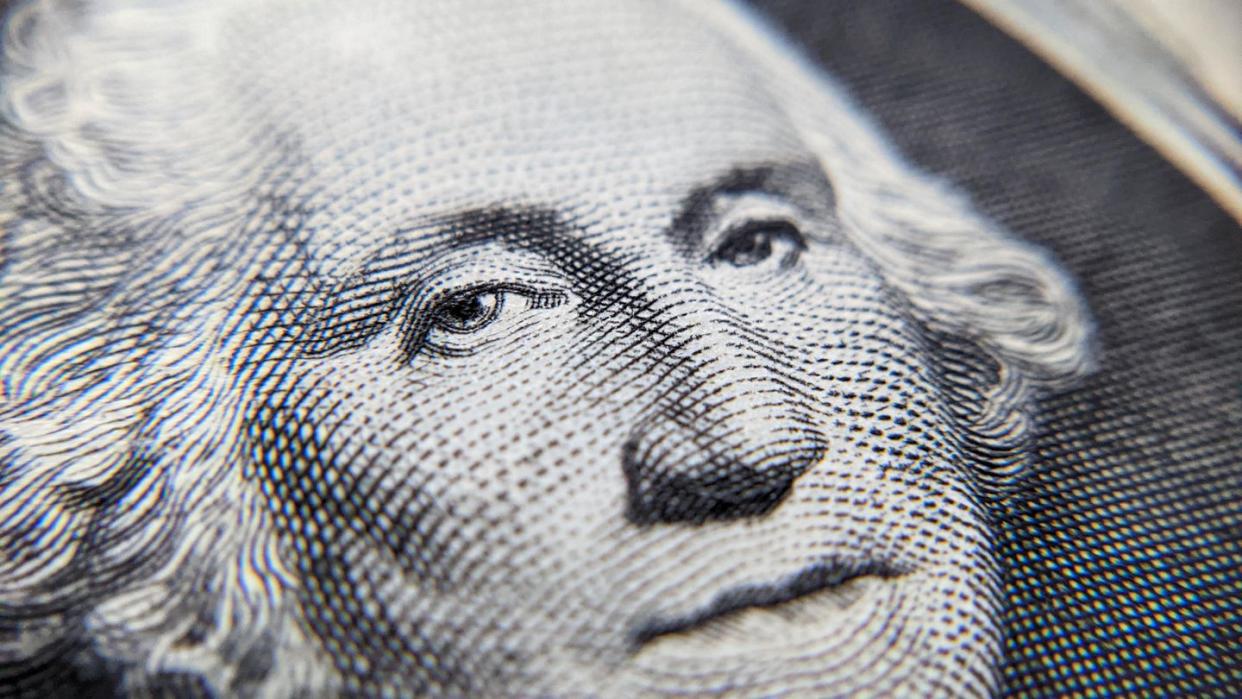Archaeologists Found Two Epic Treasures Under the Floors of George Washington’s Mansion

A renovation project at George Washington’s Mount Vernon mansion uncovered two sealed glass bottles full of cherries.
The cherries, complete with stems and pits, still had their signature scent.
The two bottles come characteristic of styles from the 1750s and were placed in a forgotten pit.
When archaeologists poured the liquid out of two European-manufactured bottles found under a brick floor at George Washington’s Mount Vernon mansion, they enjoyed the scent of cherry blossoms. The once-forgotten and now-found bottles were likely filled with cherries before the Revolutionary War in the mid-1770s and have sat sealed—and preserved—ever since.
As part of a privately funded revitalization project at the Virginia mansion, a brick floor originally laid in the 1770s was torn up, revealing a small pit and the two side-by-side dark green glass bottles, both upright and sealed.
“Not only did we recover intact, sealed bottles, but they contained organic material that can provide us with valuable insight and perspective into 18th-century lives at Mount Vernon,” Jason Boroughs, Mount Vernon principal archaeologist, says in a statement. “These bottles have the potential to enrich the historic narrative, and we’re excited to have the contents analyzed so we can share this discovery with fellow researchers and the visiting public.”
Once the bottles were discovered, each was moved to the Mount Vernon archaeology lab. Experts determined removing the liquid content could help stabilize the glass that hadn’t been directly exposed to the atmosphere for approximately two centuries. Full cherries, including stems and pits, were part of the liquid content, giving off the signature scent of the region, a “blockbuster find of two fully intact glass bottles containing liquid that have not been seen since before the war for American independence,” Doug Bradburn, Mount Vernon president and CEO, says in a statement.
The glass bottles are from a European manufacturer and archaeologists say, based on shape and style, likely from the 1740s or 1750s, which fits the timeline of needing to be placed in the pit prior to the 1770s floor installation. That makes the cherries likely pre-Revolutionary War fruit.
While the Washingtons were known fans of cherries, the picking and storage of the two bottles likely never touched their hands as the site was known to have over 300 enslaved individuals at the time of George Washington’s death.
The archaeological team plans to ship the bottles off for conservation efforts and the contents will be sent to a laboratory for scientific analysis and testing.
Boroughs tells the Washington Post that the bottles likely held only cherries when they were originally placed in their location and that amber-colored liquid could be groundwater that got in the bottles once the corks sealing the bottles started to fail as the decades wore on. Despite the liquid and a sort of goo being inside the bottles, early analyses support the only cherry theory, likely stored away to help preserve the fruit for later use in cooking or baking.
“There are 18th century accounts that talk about proper ways of preserving fruits and vegetables,” Boroughs tells the newspaper. “One of the most common, especially for berries, is to dry them as much as possible … put them in a dry bottle, cork it … and then bury them.”
That advice may still hold true today, as the cherries held their shape and scent 250 years later.
You Might Also Like
